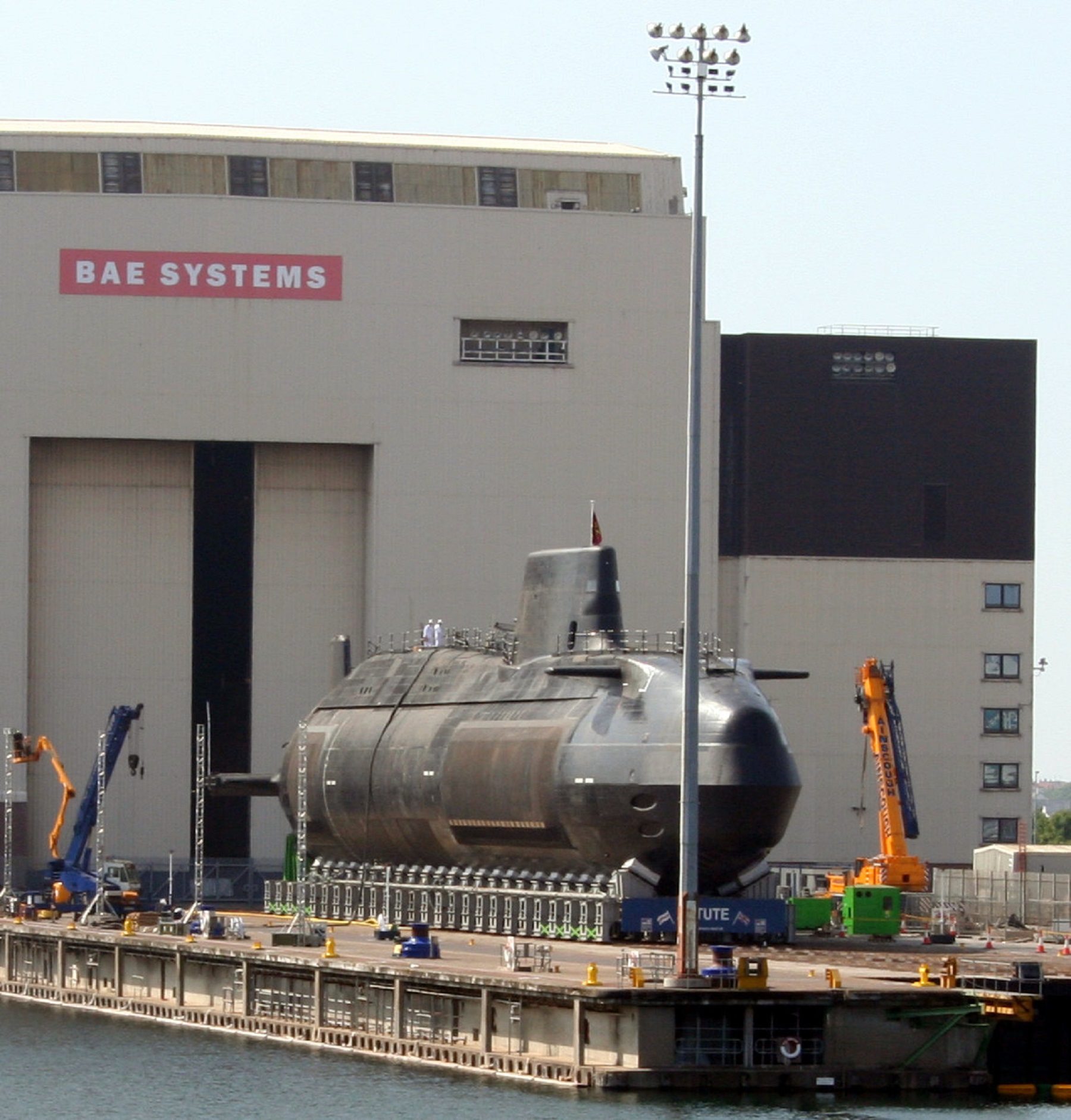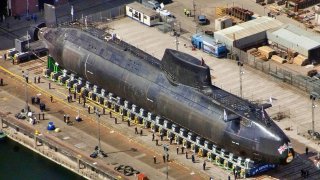Astute-Class Submarine: The Best Stealth Sub Not Made in the USA
The Royal Navy’s Astute-class submarine stands as a marvel of naval technology, known for its extreme quietness and high capabilities. Powered by a Rolls-Royce nuclear reactor, this submarine’s range is nearly unlimited, limited only by food supplies, while its arsenal includes Tomahawk missiles and Spearfish torpedoes.
What You Need to Know: The Royal Navy’s Astute-class submarine stands as a marvel of naval technology, known for its extreme quietness and high capabilities. Powered by a Rolls-Royce nuclear reactor, this submarine’s range is nearly unlimited, limited only by food supplies, while its arsenal includes Tomahawk missiles and Spearfish torpedoes.

-Designed for stealth and versatility, it even accommodates Special Forces operations via a dry deck shelter.
-Despite its prowess, only seven are in service, with replacements under the SSN-AUKUS program years away. Limited production capabilities across Western nations raise concerns that the current fleet may face irreparable losses in any large-scale conflict.
The Astute-class Submarine is Extraordinary—and No One Has Ever Heard of It
Using three-dimensional (3D) design models, the British Royal Navy’s Astute-class submarine is one of the most sophisticated submarines in the world that few know about. This submarine is known for having many technological firsts. One of the stranger ones is not having a periscope of any kind. More importantly, the Astute-class is the quietest submarine in the world—as quiet as a dolphin is, in fact! Specifically, a baby dolphin.
The stealthiness of this submarine is assured through a combination of technologies, notably its next-generation anti-acoustic tiles around its hull, which as the name suggests, cuts down on the submarine’s noise level when underway.
Astute-Class: The Specs
A Rolls-Royce PWR2 (Core H) reactor powers this submarine. The British installed pump-jet filters on these engines, too. The reactor has a 25-year lifespan before refueling is required. As with most nuclear-powered submarines, the range is virtually limitless. Instead, the only limits placed upon these boats are the constraints of onboard food supply.
These submarines are quite lethal, too. They bring with them an assortment of Spearfish heavy torpedoes and Tomahawk Block IV cruise missiles, which can hit targets at a range of 1,000 miles away. Decoys and electronic support measures (ESM) comprise the submarine’s advanced countermeasures capabilities which defend the ship from enemy attack.
Much like an American Virginia-class attack submarine, the British Astute-class sub comes equipped with a dry deck shelter to carry Special Forces. From this dry deck shelter, the Royal Marine Commandos or Royal Navy Special Boat Service (SBS) can deploy its covert warriors from the submerged vessel.
The Royal Navy possesses seven Astute-class nuclear-powered submarines. First introduced in 2014, the Astute-class is an incredible piece of technology. Too bad for the British (and their allies) that there are only seven of these ships—and there are unlikely to be anymore anytime soon. With their 25-year lifespans, London plans to begin phasing these submarines out in favor of what they’re calling the “SSN-AUKUS.”
A Replacement in the Offing?
SSN-AUKUS is the designation given to the next-generation of attack submarines that will be built and fielded by both the British Royal Navy in the late 2030s and the Royal Australian Navy in the early 2040s. The “Australia-United Kingdom-United States” (AUKUS) agreement was crafted as a way of making the navies—notably the submarine forces—of the three nations more interoperable. It was meant to cut down on resources and overcome the stifling limitations of all three developed countries’ ailing industrial bases.

AUKUS has thus far failed to fully live up to its promises. And the British have a fine submarine in the Astute-class so they probably should avoid prematurely ridding themselves of this platform in favor of some theoretical system of the kind that the AUKUS alliance is saying they will develop—at some point.
What Britain needs are greater numbers of the Astute-class. And that requires far more resources than the British can muster.
This, of course, is the real problem facing the West. Whether it be the Astute-class submarine or the Virginia-class sub in America, the West cannot build enough of them. And because they cannot keep up with demand of the current threat environment, let alone the kind of demands that will be placed upon this limited force in war, they’re in the position of making promises about theoretical platforms knowing full well that those promises may fall flat, as peacetime industrial supply continues being outpaced by the demand.
Should war erupt, with submarines being on the frontlines of any great power conflict, the British submarine force will be whittled down by attrition in any great power war. And they won’t be replaced in a reliable or timely manner because of the inefficiency of the submarine force.
After all, there’s only so much that the British Royal Navy can do with just seven of these incredible pieces of equipment.
Author Experience and Expertise: Brandon J. Weichert
Brandon J. Weichert, a National Interest national security analyst, is a former Congressional staffer and geopolitical analyst who is a contributor at The Washington Times, the Asia Times, and The-Pipeline. He is the author of Winning Space: How America Remains a Superpower, Biohacked: China’s Race to Control Life, and The Shadow War: Iran’s Quest for Supremacy. His next book, A Disaster of Our Own Making: How the West Lost Ukraine, is due October 22 from Encounter Books. Weichert can be followed via Twitter @WeTheBrandon.
All images are Creative Commons or Shutterstock. All photos are of various submarine styles.
From the Vault
Russia Freaked Out: Why the U.S. Navy 'Unretired' the Iowa-Class Battleships
Battleship vs. Battlecruiser: Iowa-Class vs. Russia's Kirov-Class (Who Wins?)


